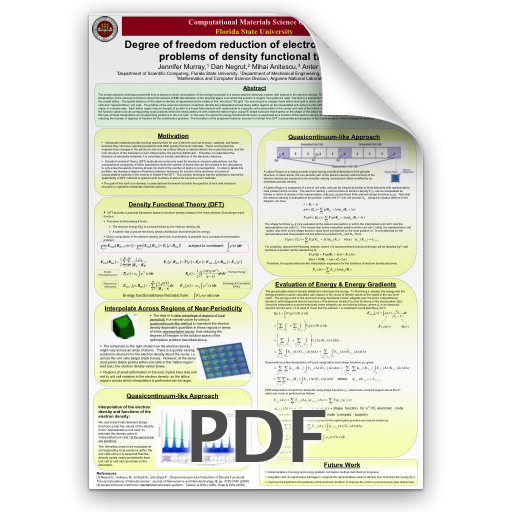
Degree of freedom reduction of electronic structure problems of density functional theory
Abstract
The model reduction technique presented here is based on direct minimization of the energy functional of a nanocrystalline electronic system with respect to the electron density. This solution of the minimization problem is aided by a two-level interpolation of the unknown functions using finite element (FEM) discretization of the physical space over which the solution is sought. Two grids are used. The first is a subatomic finite element grid which identically discretizes the individual unit cells in the crystal lattice. The spatial behavior of the electron density is represented at the nodes of this “electronic” FE grid. The second grid is a larger-scale lattice-level grid in which unit cells are grouped into “lattice regions” which have “interpolated” unit cells and “representative” unit cells. The profiles of the unknown functions of electron density are interpolated across these lattice regions (in the interpolated unit cells) in terms of the electron density values at the representative unit cells of the lattice region in a unique way. Each lattice region may be thought of as akin to a linear finite element with nodal points at a specific cell-local position in the corner unit cells of the lattice region. The function values at these nodal points are used to estimate the function values only at corresponding local positions within the interpolated unit cells inside the lattice region using FE shape functions that depend on the shape of the lattice region. The assumed near periodicity of the electron density allows for this type of linear interpolation at corresponding positions in the unit cells. In this way, the electronic energy functional has been re-expressed as a function of the electron density at the electronic nodes only in the representative unit cells, greatly reducing the number of degrees of freedom for the minimization problem. The formalism of the proposed reduction scheme for Orbital-Free DFT is presented and progress of the implementation of the technique is reported.

